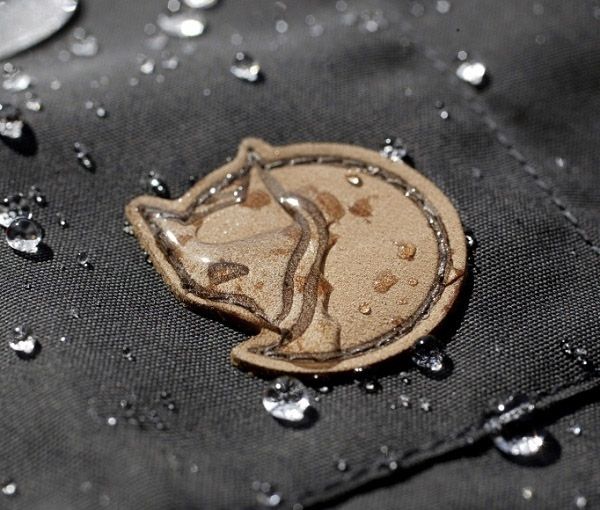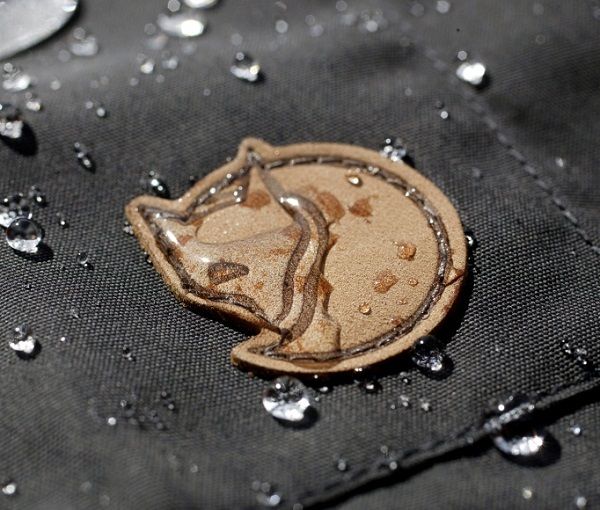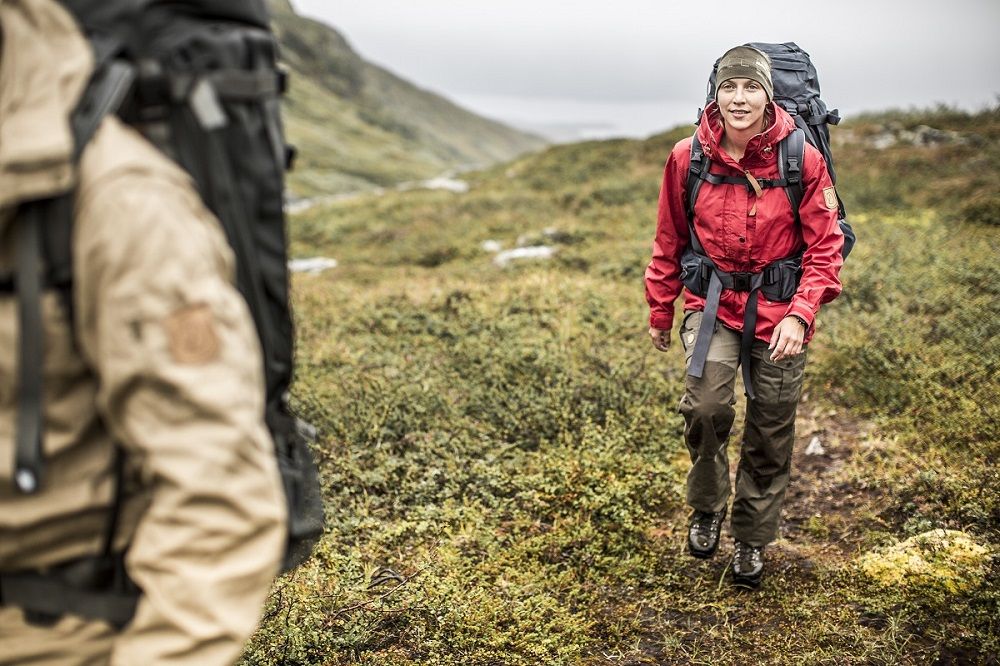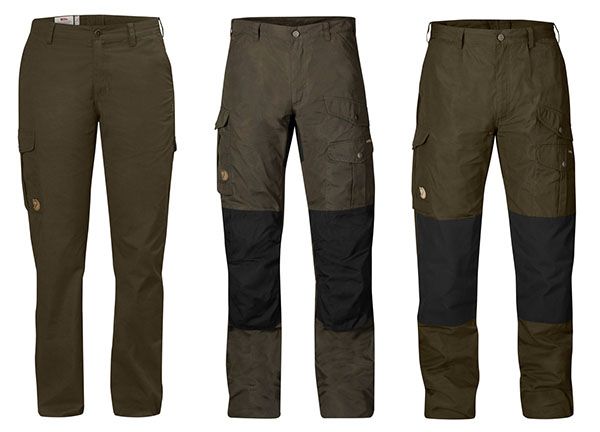Nordic Trouser Guide
The Importance of Trousers
Few pieces of your clothing will live a harder life than your trousers. Few will also be harder to adjust when you are out, or can cause as much discomfort if they don’t fit right. That’s why the trousers are where you should start building your outfit.
A good pair of trousers have to accomplish a lot. They should be comfortable to wear, allow moisture to evaporate through the fabric when you are working hard, and protect against the elements long enough for you to get to cover or pull a pair of over trousers on if the weather turns. In addition to this they should be durable enough to last for years. When considering all that, it is easy to see why they are not always easy to pick out.
What to Think About When Selecting Trousers
Of course, as with all clothing, nothing can do absolutely everything – and the best choice for you will depend on what your requirements are. Because of this, it is important that you ask yourself how you want the trousers to fit, and what you will be using the them for. In general, our outdoor trousers come in two categories as far as we see it – trousers meant to be used primarily for trekking and ones meant for general camping. Different use will pose different challenges. These challenges will determine the material, and extra features you will want. It is important to remember that features for the sake of features adds no value, what it all comes down to is what those features allow you to do - and how comfortable they allow you to be while doing it.
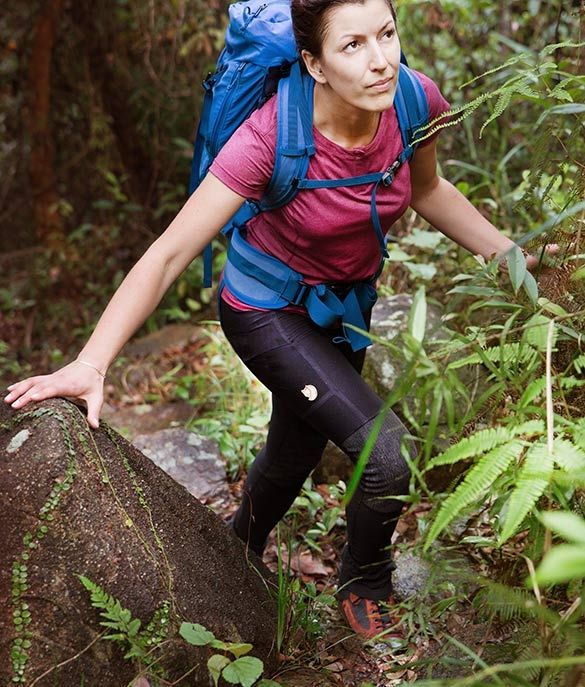
Materials
Most Scandinavian outdoor trousers are made from materials consisting of a mix of polyester and cotton. These are densely woven fabrics that are then treated with a wax to increase the water resistance. The result is a fabric that is very comfortable, durable, wind proof, water resistant, easily adaptable and offers impressive breathability.
For most conditions this type of material is a far better choice than a waterproof membrane. The reason is that these membranes often become too waterproof. To understand why this is a problem it is worth considering the two major sources of moisture when you are in the outdoors. Rain is one, and the heat released by your body when you are active is the other. A lot of times a membrane simply cannot release the moisture on the inside of your garment as quickly as it is generated. The result is that you get wet from the inside, no matter how protected you are from the elements outside.
A polyester and cotton fabric, like G-1000 from Fjallraven, on the other hand is far better suited to release this type of moisture. In addition, it is able to stand up to light showers as well and dries quickly if it does get wet. The combination means that the fabric is ideal to be worn in pretty much any condition, except when it is absolutely pouring down for prolonged periods of time. For times like these a simple, and lightweight, waterproof garment should be used in conjunction.
Another important aspect of the material is that it is very adaptable. Since the wax used to increase the water resistance can easily be applied or washed out, they can be adapted to suit the conditions. On warm sunny days, the wax can be washed out - making the trouser light and breathable. On days where precipitation looks more likely, wax can be added to improve the water resistance.
This combination of polyester and cotton is the type of fabric you’ll find in virtually every pair of trousers here at Nordic Outdoor.
Finding The Right Fit
A sign of a good trouser is that when you put it on you feel that it is a trouser that you want to move in. Of course, that means that you need to find the right fit. While the right fit is different for everyone, there are a couple of things to keep in mind to ensure that you find the one that’s right for you.
First, we wouldn’t be Scandinavians if we didn’t mention layering at this point. You wouldn’t want a fixed lining in a pair of outdoor trousers, since it would limit the flexibility of the trouser – and when they can be used. Instead, it is better to get a trouser that you can wear a layer underneath when needed. This means that you need to have enough room to fit this layer, without selecting a size that is so big that it will sacrifice on comfort of course.
Comparing fits between brands is not always the easiest. Just because you have found the right size for one brand doesn’t mean that it will be right for another.
No two bodies are the same, and that’s why different models offer different fits – even within the individual brands. Fjallraven for example offer two fits, the classic Regular, the longer leg and then slightly more relaxed Comfort, the main difference between the three being the width of the trouser across the seat. There are also different waists, which differ in the distance between the waist and the crotch. All so that you can find the fit that is just right for you.
Features in Trekking Trousers
In a trekking trouser you will often find, and want, stretch panels – usually around the lower back and on the knees, to offer maximum freedom of movement. For increased comfort the trousers should also have pre-shaped knees, meaning that there is already a slight bend sewn into the design. The reason it is important not to restrict movement when you are trekking is that a more rigid fabric would resist slightly with every step, which would obviously decrease comfort. Also, when you are trekking you are likely to come across streams or boulders that require longer steps to be taken – where movement is crucial to be able to get up or across without a bloody nose or a pair of ripped trousers.
Because of both comfort and durability reasons you’ll also find that the seams have been moved to avoid having them in high-wear areas on a good walking trouser. In some you’ll also find that the waist is higher in the back. The reason for this is that your backpack inevitably will pull your shirt up – which could leave the backpack straight against your skin. Having a trouser that cover underneath the shirt will mean this doesn’t happen and will increase comfort. When you spend a lot of time walking, small details like this make a big difference.
No matter how breathable the material is, during the warmer months of the year you are still likely to work up a sweat when trekking. It is therefore useful to have trousers with vent zips that can be used to release excess heat.
Some of the best examples of trekking trousers we stock would be the following;
Features in General Camping Trousers
On a general camping trouser you will be more likely to find reinforcement in terms of stronger material where you would have found stretch panels on a walking trouser. While of course freedom of movement is important when you are camping, durability is even more so. You’ll usually find these reinforcement areas on the knees and the seat of the trousers.
When camping you tend to spend a great deal of times on your knees – everything from creating kindling for the fire to putting up the tent is preferably done on your knees – so another useful feature is the ability to have kneepads.
Inherently general camping requires tools, so it is also important that the trousers have ample room for storage - making plenty of pockets a must.
Of course, there is a certain amount of overlap in terms of features. Just because we see something as ideal for camping doesn’t mean it can’t be used for trekking and vice versa – but these types of considerations are worth keeping in mind when you are considering what’s right for you.
Finding the right pair of trousers might take some effort but once you have the right pair they’ll be a trusted companion for the years to come.
Some of our favourite examples would be;
Keb Trouser
Vidda Pro
